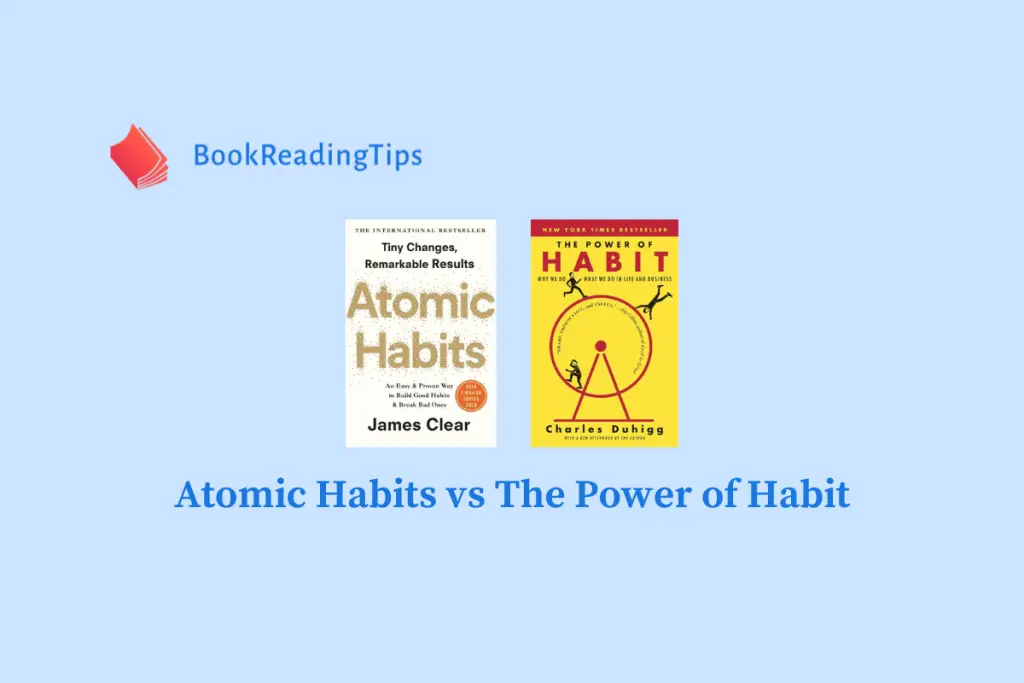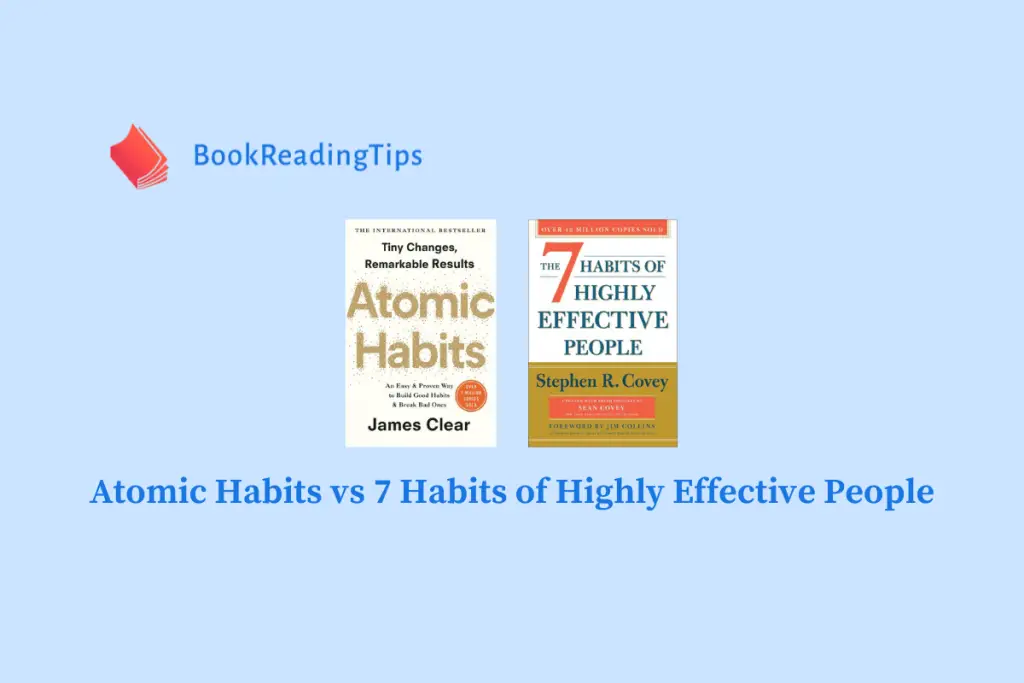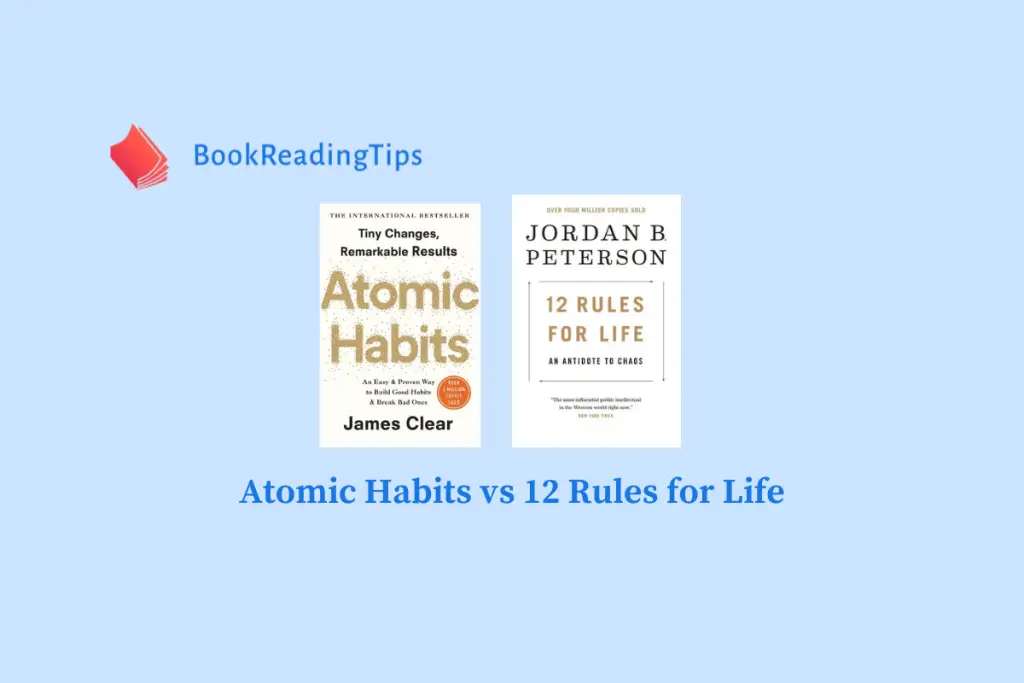Atomic Habits by James Clear and Getting Things Done by David Allen are two highly influential books in the self-development genre. Atomic Habits delves into the power of small, consistent changes in our daily routines and behaviors, asserting that success is the result of incremental progress over time. On the other hand, Getting Things Done, often abbreviated as GTD, presents a time management method that encourages readers to move tasks out of the mind by recording them externally and then breaking them into actionable work items. Both books offer unique insights and practical strategies to improve productivity and achieve personal and professional goals.
Although both books aim to enhance productivity, they differ significantly in their approach. Atomic Habits focuses on the power of habit formation and the impact of tiny changes on long-term outcomes. It’s ideal for those who feel overwhelmed by big goals and want to adopt a more gradual, sustainable path to success. Conversely, Getting Things Done is more about managing your tasks efficiently. It’s perfect for individuals who struggle with organizing their tasks and feel their productivity is hampered by a cluttered mind. In my opinion, the choice between the two would largely depend on what aspect of productivity one is looking to improve.
In the following sections of this article, I will be discussing both these books in depth. We’ll explore the core principles, key takeaways, and practical applications of each approach. Whether you’re a fan of meticulous organization or believe in the power of small changes, I think there’s something valuable to learn from both Atomic Habits and Getting Things Done. So, let’s delve deeper and discover which of these productivity philosophies resonates with you the most.
Table of Contents
- Unraveling the Secrets of Atomic Habits
- Exploring the Concept of Getting Things Done
- Similarities & Differences Between the Books
- FAQs
- 1. What is the main difference between Atomic Habits and Getting Things Done?
- 2. Which book is better for personal development, Atomic Habits or Getting Things Done?
- 3. Can I apply the principles of both Atomic Habits and Getting Things Done simultaneously?
- 4. Which book is easier to read and understand, Atomic Habits or Getting Things Done?
- 5. Are there practical exercises in both Atomic Habits and Getting Things Done?
- 6. Which book should I read first, Atomic Habits or Getting Things Done?
- Conclusion
Unraveling the Secrets of Atomic Habits

i. Building Habits Through Incremental Changes
In my opinion, one of the most compelling aspects of James Clear’s “Atomic Habits” is its focus on the power of small, incremental changes. Clear asserts that large changes are often difficult to maintain, leading to frustration and abandonment of goals. However, by making small changes that are easy to manage, we can gradually improve our habits and ultimately our lives. I feel this is a refreshing perspective, as it counters the common belief that only big, dramatic changes can lead to significant results.
ii. The Four Laws of Behavior Change
Clear introduces the Four Laws of Behavior Change, which I believe are the backbone of his approach to habit formation. These laws are: make it obvious, make it attractive, make it easy, and make it satisfying. These principles guide the reader in creating new habits and eliminating harmful ones. I think these laws are particularly useful because they are straightforward and actionable, providing a clear roadmap for habit change.
iii. The Role of Identity in Habits
Another intriguing idea in “Atomic Habits” is the role of identity in habit formation. Clear argues that habits are not just actions, but expressions of our identity. He suggests that by changing our self-identity, we can more easily change our habits. I find this concept empowering because it suggests that we have more control over our habits and behaviors than we might initially believe.
Exploring the Concept of Getting Things Done

i. The Five Stages of Workflow
David Allen’s “Getting Things Done” presents a unique approach to productivity. One of the core principles is the Five Stages of Workflow: capture, clarify, organize, reflect, and engage. I think this process is a great tool for managing tasks effectively. It provides a systematic way to tackle tasks, ensuring that nothing falls through the cracks.
ii. Context-Based Task Lists
Allen also introduces the idea of context-based task lists. Rather than organizing tasks by project, Allen suggests organizing them by the context in which they can be done. This could be a specific location, time, or resource. I feel this method can be more efficient, as it allows you to complete tasks in batches, reducing the time spent switching between different types of tasks.
iii. The Importance of a Weekly Review
The concept of a weekly review is another key principle in “Getting Things Done”. Allen argues that regularly reviewing and updating your task lists is crucial for staying on top of your workload. This is not just about updating your to-do list, but also about reflecting on your progress and planning for the future. In my opinion, this is a powerful tool for maintaining control over your work and ensuring that you are moving in the right direction.
Similarities & Differences Between the Books
Similarities
Both “Atomic Habits” by James Clear and “Getting Things Done” by David Allen are highly acclaimed books that provide practical guidance on productivity and personal growth. One striking similarity is their shared emphasis on the importance of small, consistent actions. In “Atomic Habits,” Clear advocates for the power of tiny changes and how they can yield remarkable results over time. Similarly, Allen’s “Getting Things Done” method is rooted in the belief that managing our tasks effectively on a daily basis leads to significant productivity gains in the long run.
In both books, the authors underscore the importance of systems over goals. While goals are important, Clear and Allen argue that it’s the systems or processes we put in place that determine our success. They both also stress on the necessity of clarity in our actions. In “Atomic Habits,” Clear suggests that making good habits obvious can facilitate their adoption. In “Getting Things Done,” Allen emphasizes the need to clearly define our tasks to effectively manage them.
Differences
Despite these similarities, the two books differ significantly in their approach to productivity and habit formation. “Atomic Habits” focuses on the individual’s behavior and how to modify it through four key steps: cue, craving, response, and reward. Clear’s approach is more about changing our habits at a fundamental level, which in turn leads to changes in our identity and self-image.
On the other hand, “Getting Things Done” is more about managing our tasks and projects effectively. Allen’s approach is more tactical, providing a detailed system to capture, clarify, organize, reflect, and engage with our tasks. It’s less about changing who we are and more about managing what we do.
In my opinion, “Atomic Habits” is more introspective, focusing on self-improvement from within, while “Getting Things Done” is more extroverted, focusing on managing our external tasks and commitments. While both books provide valuable insights, their approaches cater to different needs and preferences. Ultimately, the choice between the two will depend on whether you’re looking to change your habits and behaviors or improve your task and project management skills.
FAQs
1. What is the main difference between Atomic Habits and Getting Things Done?
Atomic Habits, written by James Clear, focuses on the power of small, everyday habits and how they can lead to significant changes over time. On the other hand, Getting Things Done, by David Allen, is a time management method that aims to increase productivity and reduce stress.
2. Which book is better for personal development, Atomic Habits or Getting Things Done?
Both books are excellent for personal development but cater to different needs. If you’re looking to develop new habits or change existing ones, Atomic Habits is the better choice. If you need help managing your time and tasks more efficiently, Getting Things Done would be more beneficial.
3. Can I apply the principles of both Atomic Habits and Getting Things Done simultaneously?
Absolutely. The principles of Atomic Habits can help you develop the discipline needed to stick to the Getting Things Done methodology. They complement each other well.
4. Which book is easier to read and understand, Atomic Habits or Getting Things Done?
Both books are reader-friendly, but some readers find that Atomic Habits is more straightforward and easier to grasp due to its focus on small, everyday habits.
5. Are there practical exercises in both Atomic Habits and Getting Things Done?
Yes, both books offer practical exercises. Atomic Habits provides strategies to form good habits and break bad ones while Getting Things Done offers a step-by-step guide to increasing productivity.
6. Which book should I read first, Atomic Habits or Getting Things Done?
It depends on your immediate needs. If you want to create or change habits, start with Atomic Habits. If you’re looking to manage your tasks and time better, start with Getting Things Done.
Conclusion
Atomic Habits and Getting Things Done are both influential books that offer valuable insights into productivity and habit formation. Atomic Habits, by James Clear, emphasizes the power of small, incremental changes in creating significant life transformations. This book is ideal for those seeking to understand how habits work and how to leverage them for personal improvement.
On the other hand, Getting Things Done by David Allen focuses on stress-free productivity. Allen introduces the 5-step GTD method – capture, clarify, organize, reflect, and engage – to manage work and life effectively. This book is perfect for individuals struggling with work-life balance or those seeking a comprehensive system to manage their tasks.
While both books share a common goal of improving productivity, their approaches differ. Atomic Habits focuses on long-term, behavioral changes while Getting Things Done targets immediate, task-oriented productivity. Yet, they complement each other beautifully, providing a holistic view of productivity and self-improvement.
In essence, these books cater to different aspects of productivity and can be beneficial to anyone seeking to improve their efficiency, manage their time better, and lead a more fulfilled life.




